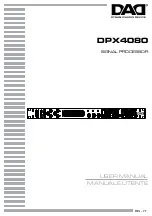
Zynq-7000 AP SoC and 7 Series FPGAs MIS v4.1
182
UG586 November 30, 2016
Chapter 1:
DDR3 and DDR2 SDRAM Memory Interface Solution
WRLVL
This option enables write leveling calibration in
DDR3 designs. This parameter must always be
“ON” for DDR3 and “OFF” for DDR2. This
parameter should
not
be changed.
DDR3: “ON”
DDR2: “OFF”
RTT_NOM
This is the nominal ODT value.
DDR3_SDRAM:
“120”: RZQ/2
“60”: RZQ/4
“40”: RZ/6
DDR2_SDRAM:
“150”: 150
Ω
“75”: 75
Ω
“50”: 50
Ω
RTT_WR
This is the dynamic ODT write termination used
in multiple-RANK designs.
RTT_WR should always be set to "OFF" since
Dynamic ODT is not supported.
DDR3_SDRAM:
“OFF”:
RTT_WR disabled.
“120”: RZQ/2
“60”: RZQ/4
OUTPUT_DRV
This is the DRAM reduced output drive option. “HIGH”
“LOW”
REG_CTRL
This is the option for DIMM or unbuffered
DIMM selection. This parameter should
not
be
changed.
“ON”: Registered DIMM
“OFF”: Components, SODIMMs,
UDIMMs.
IODELAY_GRP
This is an ASCII character string to define an
IDELAY group used in a memory design. This is
used by the Vivado Design Suite to group all
instantiated IDELAYs into the same bank.
Unique names must be assigned when multiple
IP cores are implemented on the same FPGA.
Default: “IODELAY_MIG”
ECC_TEST
This option, when set to “ON,” allows the entire
DRAM bus width to be accessible though the
UI. For example, if DATA_WIDTH == 64, the
app_rd_data width is 288.
“ON”
“OFF”
PAYLOAD_WIDTH
This is the actual DQ bus used for user data.
ECC_TEST = OFF:
PAYLOAD_WIDTH = DATA_WIDTH
ECC_TEST = ON:
PAYLOAD_WIDTH = DQ_WIDTH
DEBUG_PORT
This option enables debug signals/control.
“ON”
“OFF”
TCQ
This is the clock-to-Q delay for simulation
purposes.
(The value is in picoseconds.)
tCK
This is the memory tCK clock period (ps).
The value, in picoseconds, is based
on the selected frequency in the
MIG tool.
DIFF_TERM_SYSCLK
“TRUE,” “FALSE”
Differential termination for system
clock input pins.
Table 1-64:
7 Series FPGA Memory Solution Configuration Parameters
(Cont’d)
Parameter
Description
Options
















































